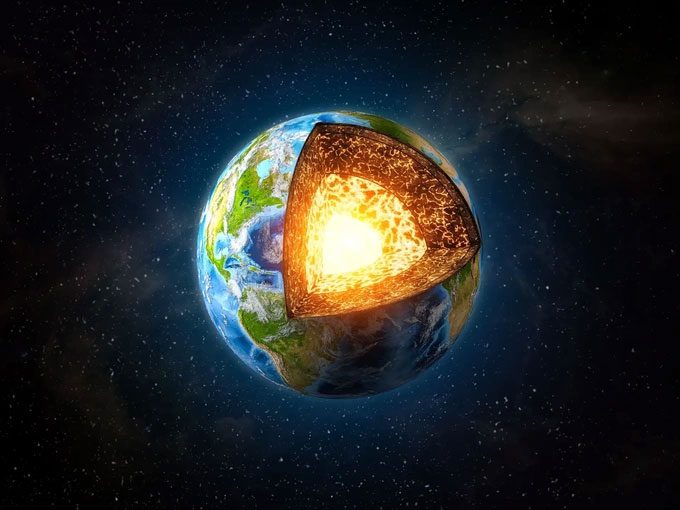Recent research indicates that the Earth’s rotation is slowing down. If it were to stop completely, humanity would face catastrophic consequences.
The theory of the Earth’s rotation was proposed as early as the 5th century BC, but it was dismissed and forgotten until the 16th and 17th centuries when the heliocentric theory and the law of universal gravitation gained worldwide acceptance.
Recent studies have shown that the Earth’s rotation is indeed slowing down. So, what would happen if our planet stopped spinning?

If the Earth stops spinning, humanity will face a mass extinction. (Illustration: Adobe Stock).
Extreme Temperatures and Deadly Cosmic Radiation
If the Earth were to stop rotating, the first thing we would experience is a drastic shift in day and night cycles. People would endure 6 months of daylight followed by 6 months of darkness. During this time, temperatures would become extremely harsh, fluctuating between around 60 degrees Celsius (140 degrees Fahrenheit) and -50 degrees Celsius (-58 degrees Fahrenheit), depending on solar exposure.
The only option left for all of us would be to migrate to areas where survival is possible.
Additionally, if the Earth suddenly ceased its rotation, everything on its surface, including humans, would be flung eastward due to inertia. This is akin to losing balance and falling when a bus brakes suddenly, but imagine that the vehicle you are on is traveling at a speed of 1,000 km/h (621 mph).
This could potentially launch us off the planet and into space.
Simultaneously, the Earth would also change shape to become a perfect sphere, rather than its current ellipsoidal shape (a type of surface resembling an ellipse in three-dimensional space). Tectonic plates would be affected, causing significant movement that could lead to devastating earthquakes and tsunamis. Water from the oceans would flood most of the land before concentrating at the poles due to the loss of centrifugal force.
Ultimately, if the Earth stops spinning, it will lose its magnetic field, which acts as a protective shield that deflects charged particles from the solar wind, resulting in exposure to lethal radiation.
What If the Earth Were Flat?
To this day, although science and the vast majority of us understand that the Earth is not flat, there are still some who hold contrary beliefs. There is even a Flat Earth Society, established by a group of Platonists who advocate for the existence of abstract objects.
According to them, the Earth is a flat disc with the North Pole at the center and a massive ice wall at its edges. While this perspective is inaccurate, what would actually happen if the Earth were flat?

Many people on our planet still believe that the Earth is flat. (Illustration: Adobe Stock).
We would continuously be influenced by the gravitational pull located at the center. On the ground, trees would bend, and all objects would fall along a curved path.
Thus, as you move toward the two edges of the Earth’s disc, you would feel a force pulling you back toward the center, similar to climbing a mountain.
The oceans and even the oxygen would be drawn toward this gravitational point, so all water would concentrate in the center of the planet, and the atmosphere would cover only a thin habitable layer around this central ocean.
Finally, if the Earth were flat, tectonic activity would also cease!


















































